Whether or not to use food grade diatomaceous earth (DE) in one’s flock is a decision each chicken-keeper must make for themselves. As a new chicken-keeper, I read quite a lot about DE before purchasing a ten pound bag, thinking that the claimed benefits sounded tremendous, but I wondered whether it was possible for a product that claimed to fix so many problems in humans and animals could be the real deal. I had also read concerning reports of the carcinogenic effects on humans breathing crystalline DE and the manufacturers’ warnings to wear a respirator when using food grade DE (which is primarily amorphous DE, but also contains the more dangerous, crystalline form).
Members of my flock, enjoying a nice, communal dust bathChickens maintain their feathers and skin and control parasites by dust bathing, which is no more than a dry dirt bath. Some claim that adding DE to the dust bathing area combats external parasites (mites, lice, fleas) and that adding it to their feed controls internal parasites (worms).
As a lawyer, when reading about the benefits of any product, a red flag always goes up in my mind when I read product label claims prefaced by “may, might or could,” particularly when written by a company selling the product. For example: “…the addition of (DE) to chicken feed may also provide additional benefits including increased body weight, egg production and egg quality as well as decreased internal parasites (in poultry with a lower natural resistance).” Okay, it may. But it may not. Where’s the scientific proof that it does?
Whenever I have technical or scientific questions, I defer to trained, experienced, respected, experts for guidance. In deciding whether to use DE in/around/with/on/near my backyard chickens, I looked to several highly respected experts in the poultry world for their opinions about the claimed benefits and any dangers of food grade diatomaceous earth: Gail Damerow and Dr. Mike Petrik, DVM, MSc, a practicing chicken veterinarian. Please also read about the dangers of DE from an experienced, well-respected herbalist in a separate article on my blog, which can be found HERE.
According to Gail Damerow in The Chicken Encyclopedia, adding diatomaceous earth, wood ashes or lime-and-sulfur garden powder to their dust bath is hazardous to their respiratory health and should be avoided unless they are “seriously infested” with parasites. Even in that case, she writes, “the benefit may outweigh the danger of TEMPORARILY adding such materials.” (p. 93 emphasis added)
Damerow also states: “Diatomaceous earth is also sometimes fed to chickens as a dewormer, which supposedly causes dehydration and death to internal parasites. But when combined with a chicken’s saliva, diatomaceous earth softens and loses its cutting edge. The only way it could dehydrate internal parasites would be if it contained a hydrophilic substance that draws moisture from a parasite’s body, and such a substance would equally affect the chicken’s innards.”
In The Chicken Health Handbook, 2ed, Damerow states, “Some types of respirable dust physically stick to lung tissue…(r)espirable particles of diatomaceous earth is an example of dust that sticks, causing scar tissue to form that impairs respiration.” (pg. 158 emphasis added)
I also asked Dr. Mike Petrik, DVM, MSc, aka: The Chicken Vet, for his thoughts about DE. He is a practicing veterinarian who works with professional farmers and has overseen the care of millions of laying hens in his practice. What follows is his written response.
“The question regarding diatomaceous earth is almost a question of philosophy. Many people are of the mindset that “natural” is better, and that there is an automatic benefit to anything that is found in the dirt, plants or animals around us. I, being trained in a western medical-type program, don’t believe this to be the truth. Diatomaceous earth (DE) is a great example of this. DE is fossilized algae. Translated, it is ~90% silica (sand), 2-4% alumina (a component of aluminum), and 0.5-2% iron oxide (rust). I can find the same stuff on the floor of any autobody repair shop as the result of sandblasting old cars.
The theory is that DE is dehydrating because of the sand content, and because the algae are microscopically jagged, they scratch the waxy coating on parasites, allowing them to be killed by dehydrating the worm, tick, cocci or flea. It is touted as a “natural” worming medication and external parasite medication. What you need to realize is that the gut is full of water (making it very hard to dehydrate anything), and that it takes a long exposure time to kill multicellular parasites (ie ticks and mites).
I’m also a little leery of any product that claims to do everything…. diatomaceous earth claims to be useful in animals, on animals, in the walls of barns, coops and houses, as a pasture treatment, in the yard and garden, and as a treatment for granaries, kills bacteria, viruses, absorbs and neutralizes mercury, eliminates drug residues, absorbs organophosphate pesticides, etc, etc. Really? To be honest, all the scientific literature is very equivocal on the usefulness. Some studies find “trends”, but very little statistical significance, some studies say that DE is poorly effective at a relative humidity above 85%. One study showed more parasites in one breed of hen fed DE and less parasites in another breed of hen fed DE.
At the end of the day, my feeling is that if you want to treat the parasites in your flock, use a treatment that works….has been designed to work and has been proven to work. A well-conceived parasite program that uses different classes of drugs, observes withdrawal times and will effectively control parasites as well as resistance.
I apologize to any “anti-drug” advocates that may be offended by my stance in this regard, but I have seen too many instances of treatments that served only to allow animals to suffer infections until regular treatments are finally commenced.”
Dr. Mike Petrik, DVM, MSc,
The Chicken Vet
Sources and further reading:
Raising Chickens Naturally: Diatomaceous Earth is No Friend of Nature, by herbalist Susan Burek
The Dirt on Diatomaceous EarthOSHA Guidelines Amorphous Silica
http://www.atsjournals.org/doi/pdf/10.1164/ajrccm.158.3.9709103
Diatomite Mining and Processing
Kathy Shea Mormino
Affectionately known internationally as The Chicken Chick®, Kathy Shea Mormino shares a fun-loving, informative style to raising backyard chickens. …Read on


shop my SPONSORS
Whether or not to use food grade diatomaceous earth (DE) in one’s flock is a decision each chicken-keeper must make for themselves. As a new chicken-keeper, I read quite a lot about DE before purchasing a ten pound bag, thinking that the claimed benefits sounded tremendous, but I wondered whether it was possible for a product that claimed to fix so many problems in humans and animals could be the real deal. I had also read concerning reports of the carcinogenic effects on humans breathing crystalline DE and the manufacturers’ warnings to wear a respirator when using food grade DE (which is primarily amorphous DE, but also contains the more dangerous, crystalline form).
Members of my flock, enjoying a nice, communal dust bathChickens maintain their feathers and skin and control parasites by dust bathing, which is no more than a dry dirt bath. Some claim that adding DE to the dust bathing area combats external parasites (mites, lice, fleas) and that adding it to their feed controls internal parasites (worms).
As a lawyer, when reading about the benefits of any product, a red flag always goes up in my mind when I read product label claims prefaced by “may, might or could,” particularly when written by a company selling the product. For example: “…the addition of (DE) to chicken feed may also provide additional benefits including increased body weight, egg production and egg quality as well as decreased internal parasites (in poultry with a lower natural resistance).” Okay, it may. But it may not. Where’s the scientific proof that it does?
Whenever I have technical or scientific questions, I defer to trained, experienced, respected, experts for guidance. In deciding whether to use DE in/around/with/on/near my backyard chickens, I looked to several highly respected experts in the poultry world for their opinions about the claimed benefits and any dangers of food grade diatomaceous earth: Gail Damerow and Dr. Mike Petrik, DVM, MSc, a practicing chicken veterinarian. Please also read about the dangers of DE from an experienced, well-respected herbalist in a separate article on my blog, which can be found HERE.
According to Gail Damerow in The Chicken Encyclopedia, adding diatomaceous earth, wood ashes or lime-and-sulfur garden powder to their dust bath is hazardous to their respiratory health and should be avoided unless they are “seriously infested” with parasites. Even in that case, she writes, “the benefit may outweigh the danger of TEMPORARILY adding such materials.” (p. 93 emphasis added)
Damerow also states: “Diatomaceous earth is also sometimes fed to chickens as a dewormer, which supposedly causes dehydration and death to internal parasites. But when combined with a chicken’s saliva, diatomaceous earth softens and loses its cutting edge. The only way it could dehydrate internal parasites would be if it contained a hydrophilic substance that draws moisture from a parasite’s body, and such a substance would equally affect the chicken’s innards.”
In The Chicken Health Handbook, 2ed, Damerow states, “Some types of respirable dust physically stick to lung tissue…(r)espirable particles of diatomaceous earth is an example of dust that sticks, causing scar tissue to form that impairs respiration.” (pg. 158 emphasis added)
I also asked Dr. Mike Petrik, DVM, MSc, aka: The Chicken Vet, for his thoughts about DE. He is a practicing veterinarian who works with professional farmers and has overseen the care of millions of laying hens in his practice. What follows is his written response.
“The question regarding diatomaceous earth is almost a question of philosophy. Many people are of the mindset that “natural” is better, and that there is an automatic benefit to anything that is found in the dirt, plants or animals around us. I, being trained in a western medical-type program, don’t believe this to be the truth. Diatomaceous earth (DE) is a great example of this. DE is fossilized algae. Translated, it is ~90% silica (sand), 2-4% alumina (a component of aluminum), and 0.5-2% iron oxide (rust). I can find the same stuff on the floor of any autobody repair shop as the result of sandblasting old cars.
The theory is that DE is dehydrating because of the sand content, and because the algae are microscopically jagged, they scratch the waxy coating on parasites, allowing them to be killed by dehydrating the worm, tick, cocci or flea. It is touted as a “natural” worming medication and external parasite medication. What you need to realize is that the gut is full of water (making it very hard to dehydrate anything), and that it takes a long exposure time to kill multicellular parasites (ie ticks and mites).
I’m also a little leery of any product that claims to do everything…. diatomaceous earth claims to be useful in animals, on animals, in the walls of barns, coops and houses, as a pasture treatment, in the yard and garden, and as a treatment for granaries, kills bacteria, viruses, absorbs and neutralizes mercury, eliminates drug residues, absorbs organophosphate pesticides, etc, etc. Really? To be honest, all the scientific literature is very equivocal on the usefulness. Some studies find “trends”, but very little statistical significance, some studies say that DE is poorly effective at a relative humidity above 85%. One study showed more parasites in one breed of hen fed DE and less parasites in another breed of hen fed DE.
At the end of the day, my feeling is that if you want to treat the parasites in your flock, use a treatment that works….has been designed to work and has been proven to work. A well-conceived parasite program that uses different classes of drugs, observes withdrawal times and will effectively control parasites as well as resistance.
I apologize to any “anti-drug” advocates that may be offended by my stance in this regard, but I have seen too many instances of treatments that served only to allow animals to suffer infections until regular treatments are finally commenced.”
Dr. Mike Petrik, DVM, MSc,
The Chicken Vet
Sources and further reading:
Raising Chickens Naturally: Diatomaceous Earth is No Friend of Nature, by herbalist Susan Burek
The Dirt on Diatomaceous EarthOSHA Guidelines Amorphous Silica
http://www.atsjournals.org/doi/pdf/10.1164/ajrccm.158.3.9709103
Diatomite Mining and Processing



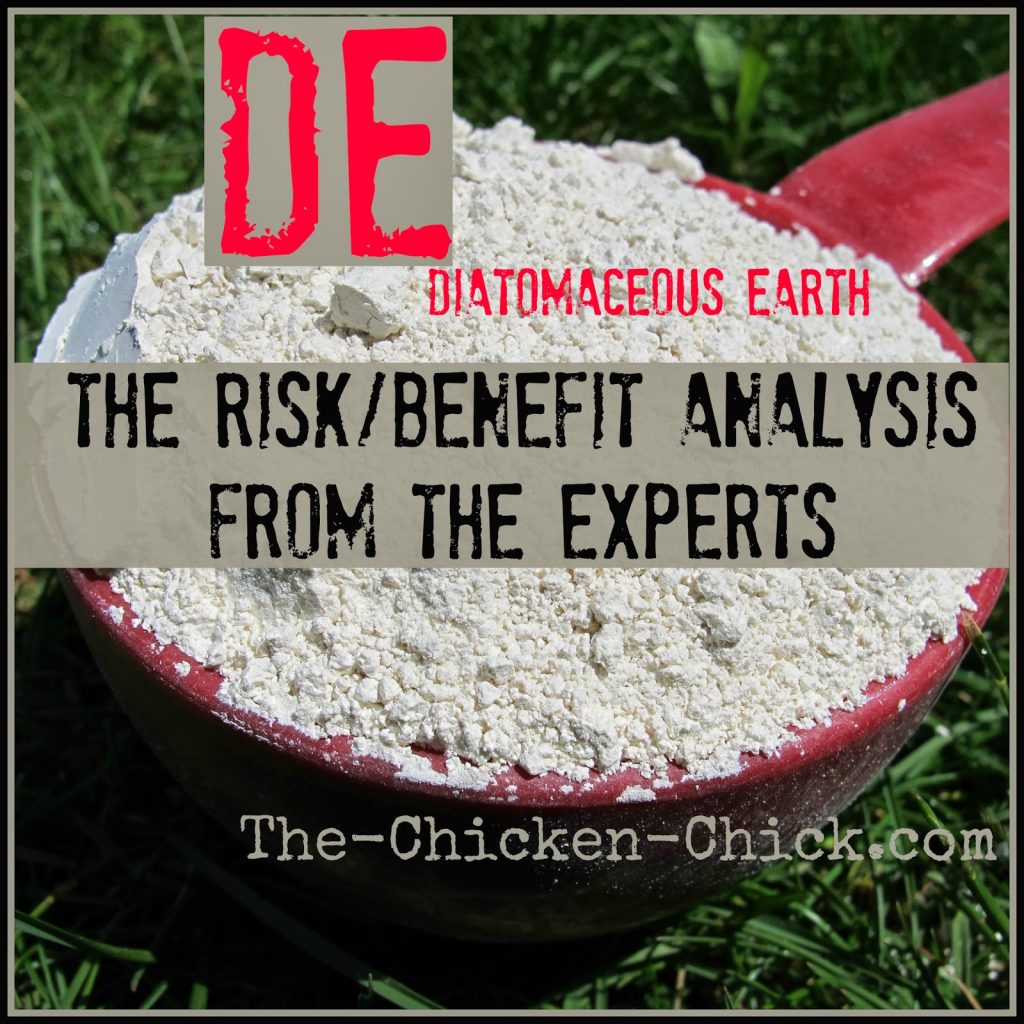
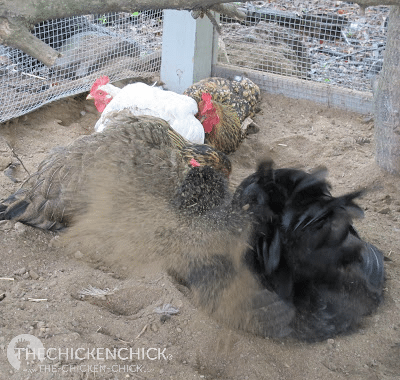
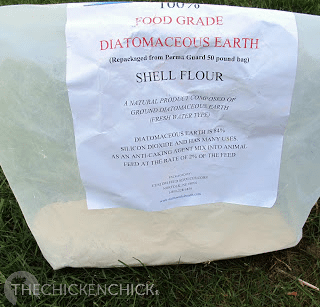
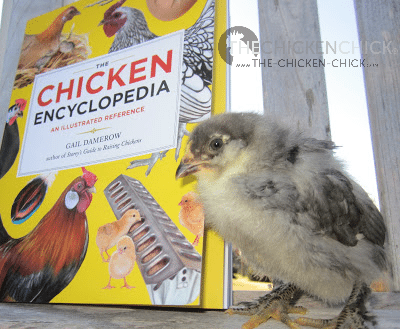
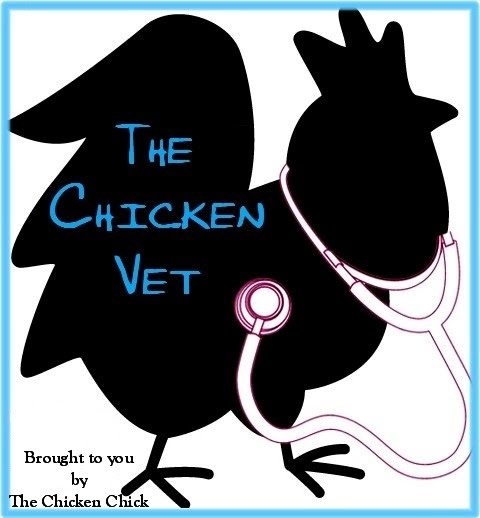

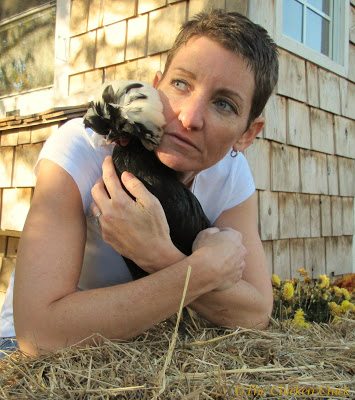






















I'm sorry to hear it, Marianna. When we know better, we do better as Maya Angelou said.
I used DE in my coop this fall and lost 27 of my chickens, they coughed they sneezed they had watery eyes and wet beaks. I will never use that stuff again!! The 18 that I have left still have a cough at times. I was very saddened from my experience.
–
–
–